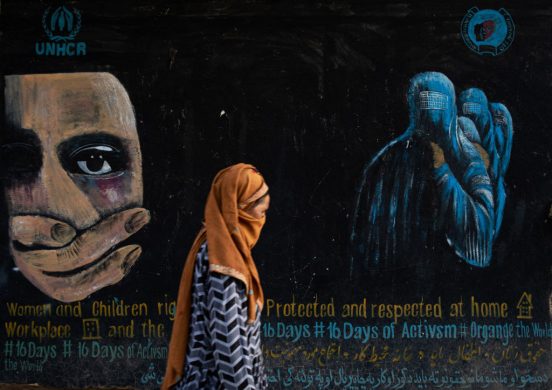Over 10.000 civile blev dræbt eller såret i Afghanistans væbnede konflikt sidste år, viser FN-rapport. Det er en stigning på 22 procent i forhold til året inden og det største antal civile ofre på et enkelt år siden 2009.
KABUL, 18 February 2015 (UN News): Increased ground engagements between parties to the armed conflict in Afghanistan are behind a 22 per cent rise in conflict-related deaths and injuries of Afghan civilians in 2014, the United Nations Assistance Mission in Afghanistan (UNAMA) said today on the release of its 2014 Annual Report on Protection of Civilians in Armed Conflict, prepared in coordination with the Office of the United Nations High Commissioner for Human Rights.
UNAMA documented 10,548 civilian casualties in 2014, the highest number of civilian deaths and injuries recorded in a single year since 2009.
Included in the toll were 3,699 civilian deaths (up 25 per cent) and 6,849 civilian injuries (up 21 per cent) for a 22 per cent rise in total civilian casualties over 2013.
Since 2009, the armed conflict in Afghanistan has caused 47,745 civilian casualties with 17,774 Afghan civilians killed and 29,971 injured.
Biggest killers of Afghan women and children
For the first time since 2009, more Afghan civilians were killed and injured in ground engagements than by improvised explosive devices (IEDs) or any other tactic.
The report found that civilian deaths and injuries from ground operations surged by 54 per cent making them the leading cause of civilian casualties and the biggest killers of Afghan women and children in 2014.
The rise in civilian casualties in 2014 resulted mainly from increased ground engagements across Afghanistan in which parties to the conflict increasingly used explosive weapons systems such as mortars, rockets and grenades, sometimes indiscriminately, in civilian-populated areas with devastating consequences for civilians.
The increased indiscriminate use of IEDs and increased number of suicide attacks by Anti-Government Elements added to the rising civilian casualties in 2014.
“In communities across Afghanistan, increased ground fighting among parties to the conflict and more IED attacks exacted a heavy toll on Afghan civilians,” said the United Nations Secretary-General’s Special Representative for Afghanistan and head of UNAMA, Nicholas Haysom.
“Rising civilian deaths and injuries in 2014 attests to a failure to fulfil commitments to protect Afghan civilians from harm. Parties to the conflict should understand the impact of their actions and take responsibility for them, uphold the values they claim to defend, and make protecting civilians their first priority. We need to see concrete steps and a real drop in civilian casualties in 2015.”
Læs resten af artiklen hos UNAMA














